“What do you want with that terrible land?” and similar remarks were made to us by friends of ours about twenty years ago when we took up our place on the edge of Kalbar.
I knew the area well as it is not far from where I grew up on a farm in the Brigalow- Softwood Scrub of the Fassifern District. My family knew it even earlier since the start of the 20th century and even then it was considered to be degraded from increasing salinity.
Originally it was covered with Brigalow- Softwood Scrub officially known as Semi-Evergreen Vine Thicket (SEVT). From the 1880s most of this vegetation was cleared by European settlers (including some of my ancestors) to make way for productive farms on these fertile soils. As has occurred in other places in south-east Queensland such disturbance has resulted in rising watertables in the lower land, which resulted in salt scalds destroying the vegetation there.
During the interim time our place, known as ‘Melaleuca’, suffered further damage being used by the locals as a rubbish dump and prior to the Second World War the local motorcycle stunt club used the salt flats for their riding practice. Also about that time the salting was increasing and the then owner believed that the rising salt was due to those ‘dreadful’ trees so he had most of them cut down. Evidence of them is still visible today by the stumps scattered about in the wetlands.
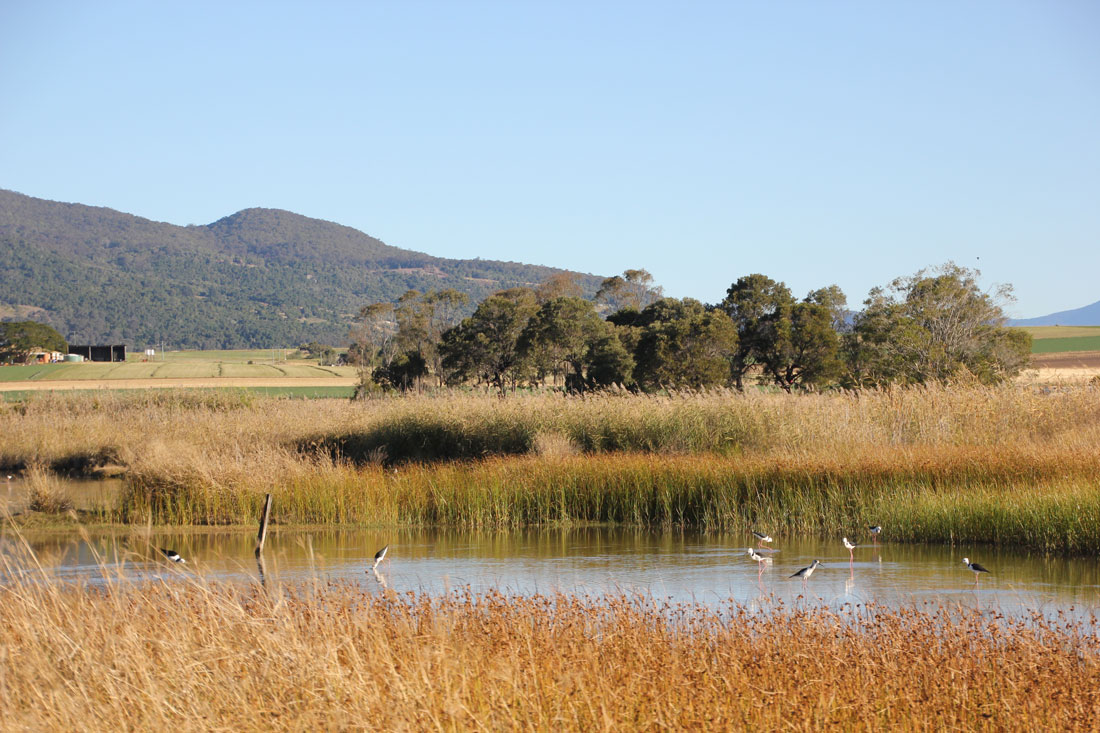
‘Before’ Photo taken of the property looking north in 1993 (top of page) and again in 2014 looking south across the wader pond (above).
Twenty years ago the area was grazed by beef cattle and a few horses and prior to that some of the land above the most salted area was cultivated. It should be pointed out that the whole area is only 17 hectares and is rather flat being only 15 metres difference in elevation. Below us are the highly productive alluvial flats of Warrill Creek.
When we started on the property it was about 40% salt scald, 20% Phragmites australis, and the remainder mostly Rhodes Grass paddock with several dozen scattered Brigalows. It did have an advantage in that it surrounds the town sewerage works, which was later able to supply a good supply of grey water for revegetation. As most Land for Wildlife members know, time is often a commodity in short supply so it was several years before we were able to get to improving the biodiversity through habitat establishment.
The first major step was an expensive one involving earth works to change flat salt scalds that retained very little surface water into watercourses with islands and shallow wader ponds. Some of the waters had half the salinity of seawater and even now some of our most common algae also occur in marine environments.
Revegetation was challenged by salty soil, frost, weeds and the fact that it is almost impossible to establish plants under existing Brigalows.
Unfortunately, for practical reasons it was necessary to resort to using some non- local species such as Casuarina glauca and Melaleuca quinquenervia together with the local M. bracteata in the new wetlands. Some other species were also used to add to the diversity. One of the major roads into town runs along the northern frontage where the scalding was an eye-sore. So with the help of two relatives, a woodlot was established to improve the site for passing traffic. A range of species were planted including Bunya Pines, Cypress Pines, Eucalyptus tereticornis (which were a failure), and the aforementioned Casuarinas. This project was started in 1999 and we now have the benefit of a sustainable fuelwood supply from the Casuarinas.
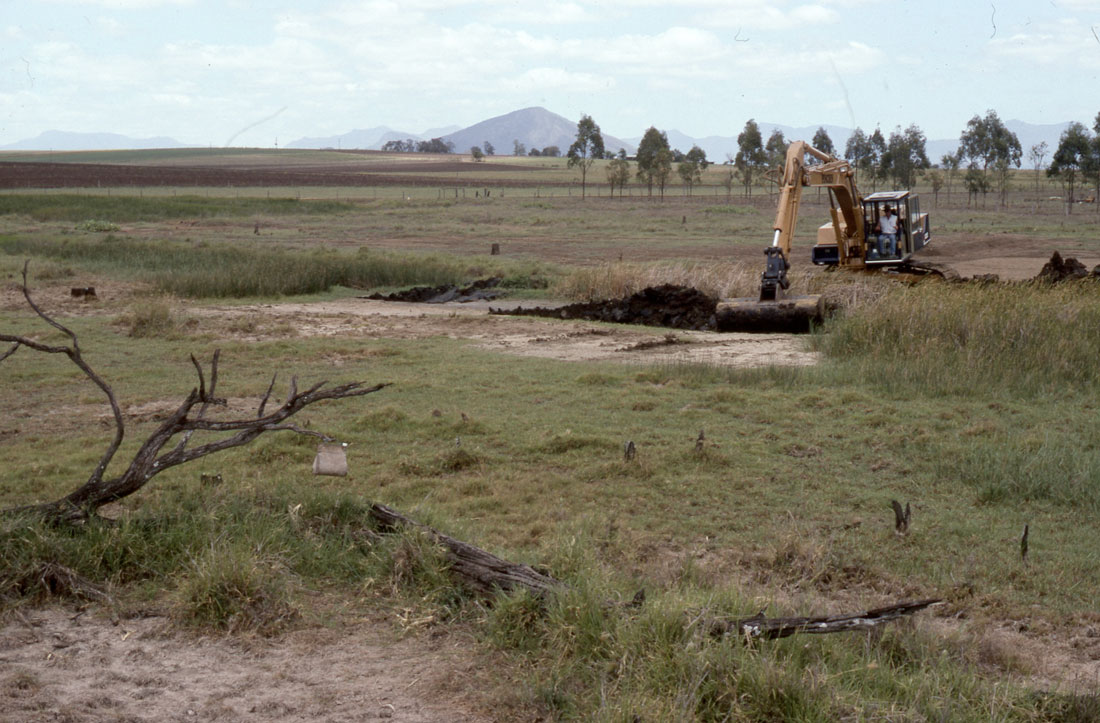
Heavy machinery was used to start work on turning this degraded, salty land into a wetland. Above photo taken in 1993 and then again at the same site in 2014 (below).
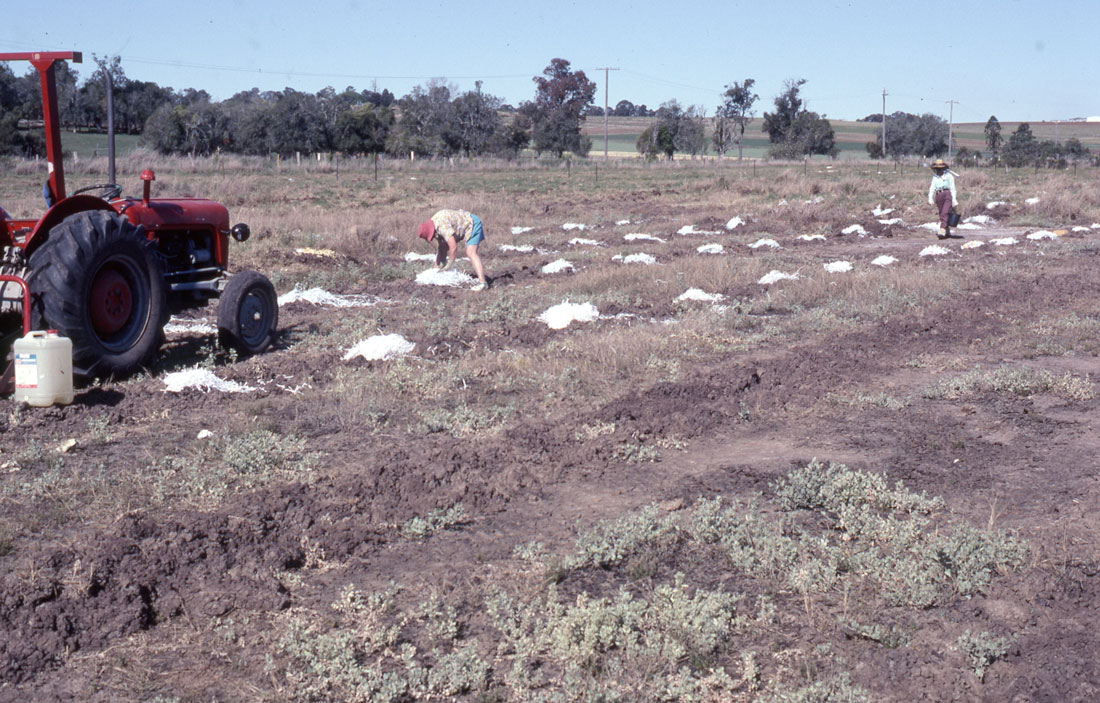
There has been lots of hard work by Barry and Marjorie to convert this salty land into a woodlot. Above photo taken in 2001 and again the same site shown earlier this year (below).
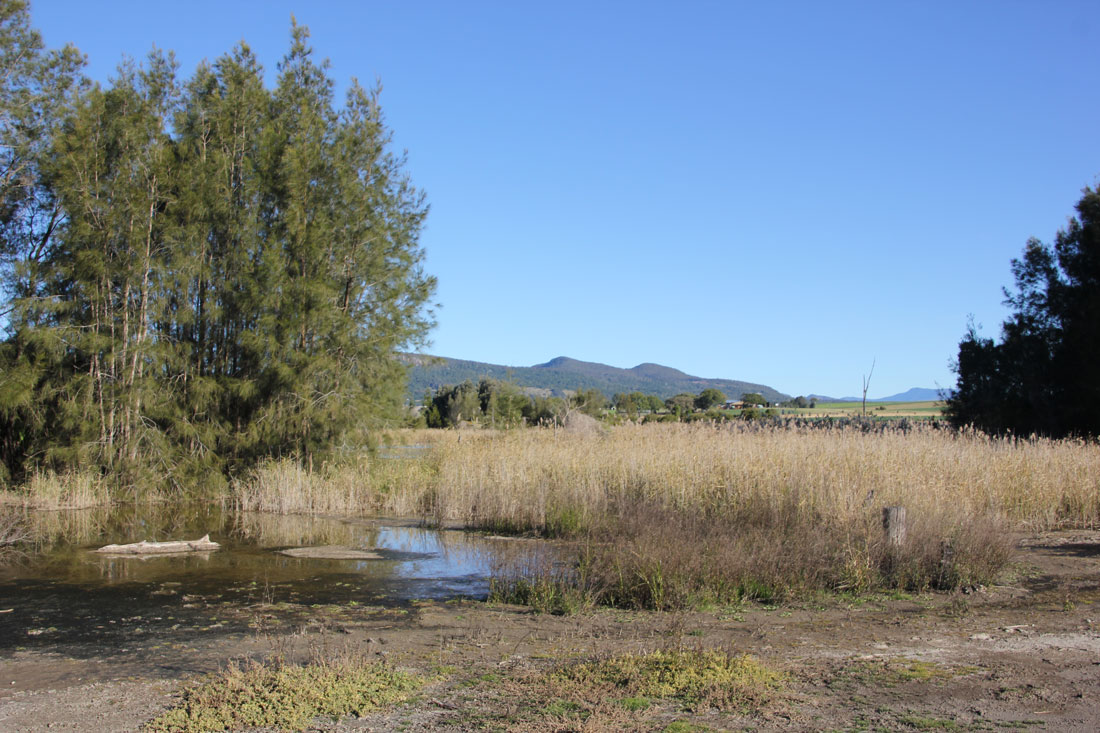
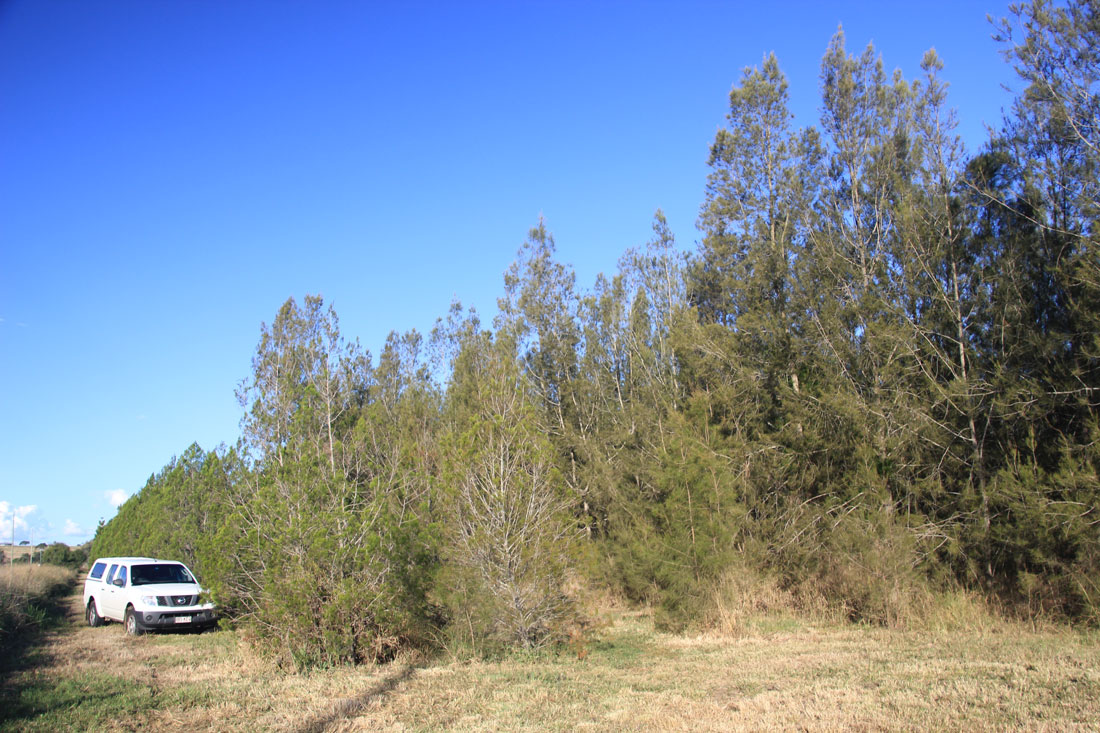
Several other areas have had some plantings including one devoted to Brigalows and nearby there are Hoop Pines and some closed forest species. Another area has recently been planted with eucalypts including Queensland White Gums with other species for diversity. Nearby, a small remnant Brigalow patch has been increased by tyne ripping of the surrounding roots to encourage suckering.
Future plantings are aimed towards increasing the understorey complexity for the benefit of other species including invertebrates. The planted areas are complemented by the house gardens, and large areas of grasses remain for the benefit of grassland inhabitants, especially birds. Unfortunately, apart from the Phragmites, most of the grasses are foreign ones but in the house garden careful mowing has encouraged increases in the Queensland Blue and Pitted Blue Grasses, much to the delight of several finch species.
There is always the idea to “plant more trees”, which is fine, but in our soils this increases the weed population due to fruit eating birds spreading seeds, especially Climbing Asparagus and Brazilian Nightshade, just to mention a few. In any case it is important to have as wide a range of habitats as possible to allow for greater biodiversity.
The bird list is now at 142 species, which of course includes residents like blue wrens, Double-barred Finches, Brown Honeyeaters, Black-fronted Plovers and Black-winged Stilts as well as migratory species passing through. On and off throughout the year Cattle Egrets use the Casuarinas in the wetlands as an overnight roost site.
Overall, the site is a bit different to what it was twenty years ago; and the birds and frogs seem to agree.
Article by Barry and Marjorie Jahnke Land for Wildlife members Kalbar, Scenic Rim
